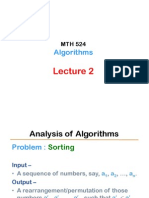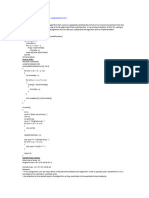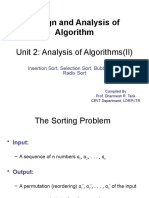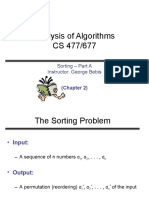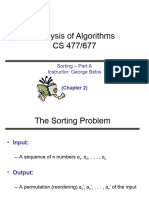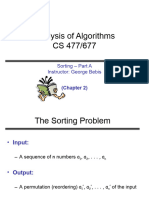0% found this document useful (0 votes)
8 views73 pagesLecture1 Introduction
The document introduces algorithms, focusing on their asymptotic performance, which includes running time and memory requirements as problem size increases. It discusses the importance of asymptotic notation (big-O) and the analysis of algorithms based on a computational model. An example of insertion sort is provided to illustrate the concepts of running time and input size.
Uploaded by
prespectiveCopyright
© © All Rights Reserved
We take content rights seriously. If you suspect this is your content, claim it here.
Available Formats
Download as PPT, PDF, TXT or read online on Scribd
0% found this document useful (0 votes)
8 views73 pagesLecture1 Introduction
The document introduces algorithms, focusing on their asymptotic performance, which includes running time and memory requirements as problem size increases. It discusses the importance of asymptotic notation (big-O) and the analysis of algorithms based on a computational model. An example of insertion sort is provided to illustrate the concepts of running time and input size.
Uploaded by
prespectiveCopyright
© © All Rights Reserved
We take content rights seriously. If you suspect this is your content, claim it here.
Available Formats
Download as PPT, PDF, TXT or read online on Scribd
/ 73




















